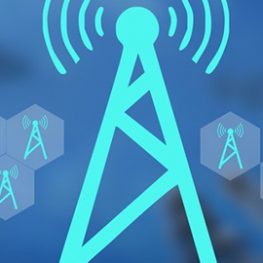Address
Admin Telecom Academy View mapCategories
The Telecommunications & Networking Specialist program is a two-module intensive certificate program offered at Admintelecom Academy campus. It provides practical and analytical training in telecommunications and computer networking. The program emphasizes practical, hands-on training with the same equipment you are likely to use in your career.
Throughout the first 4 and 6 months (Module 1) of the training, students will be exposed to networking media. They will practically design, install and configure.
Module 2( Advance level) on the other hand will be more of configuring networking media in order to interconnect and share data across different geographical locations as well as network security.
Admintelecom Academy is a firm believer of “learn by doing” and that has been our competitive advantage over these years. Our learning environment is set up to exhibit all the relevant equipment used in the industry of networking and telecommunication. We have erected 2 towers 7km apart, with each having a height of about 35m to enable students to create data path between the 2 sites. Students will be able to route data packets between these 2 points.
Our objective is to render the students highly marketable in the field of telecommunication and networking. Our training concept (Workplace ethics, standard installations and Health and Safety) will go a long to sharpen not only their hard skills but also their soft skills and entrepreneurial skills as the training offers the opportunity to start one’s own business. All modules prepare the students towards international certifications. (CompTIA, FOA and Microsoft).
MODULE ONE (Course Outline)
- Wireless Telecommunications
- Comp TIA N+
- Microwave Transmission (Standard Installation Practices)
- Certified Fiber Optics Technician- CFOT
AUDIENCE
Telecommunications professionals involved in the installation and maintenance of their Company networks.
PREREQUISITES
Basic understanding of Telecom and power.
DURATION: 4-6 Months
MODULE 2 (Course Outlines)
- Linux+
- Linux Server Administration
- Windows Server Administration
- CCTV
- Microwave Link Planning and Troubleshooting
- Certified Fiber Optics Specialist/ Home (CFOS/H)
Duration: 6 months
Duration: 4 hours’ daily for 4-6 months
Morning
Monday – Friday: 8am – 12pm
Afternoon
Monday -Friday: 1pm- 5pm
Evening
Monday – Thursday: 6pm- 9pm & Saturday: 8am-12pm
Evening
Monday – Thursday: 6pm- 9pm & Saturday: 8am-12pm
Weekend
Saturday Only: 8am-2pm
At the end of the training, students will be able the perform the following:
- How to test telecom and networking cables using the various telecom test equipment (Site master, SUNSET, OTDR light source and Power meter, Bit error test equipment cat 6 cable test equipment)
- How to conduct Telecom Technical Site
- How to prepare a bill of quantity for a base station/transmission installation
- How to conduct Internet service provider (ISP) technical site survey
- How to conduct telecom Site
- How to hoist antenna on site. (on the tower)
- How to install battery banks, Inverters, AVR, UPS and other electrical equipment on site
- How to conduct Telecom site earth test
- How to manage Telecom transmission site cables in a cable
- How to create a database for cable
- How to splice fibre optic cable
- How to test Fibre optic cable (Fibre light source and power meter)
- providing internet connectivity using microwave radio
- Sending packet through microwave link
- Configuration and routing of microwave link Introduction to Networks
Introduction to Networks
- How to implement the OSI Model
- How to setup networking topology, prepare connectors and implement wiring standards How to identify Ethernet Specifications
- How to manage network devices How to use TCP/IP model
- How to configure and manage IP Addressing How to configure Routers on a network How to create VLANs on Switches
- How to setup Wireless Networks
- How to configure and authenticate Access Control How to identify network threats
- How to configure Wide Area Networks How to troubleshoot networks
- How to Optimize, Manage and Monitor Networks, ETC.
